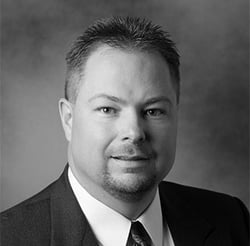Part 2 in our series on Funding Myths & Misconceptions. Click here to see Part 1.
Last week we took a look at 4 funding myths and misconceptions. Today we're taking a look at a few more funding myths and misconceptions.
Myth & Misconception #5: A Group 3 wheelchair base with tilt, seat elevator and power elevating legrests should be billed as K0861
This can be confusing because there are three power functions in this configuration, which should be multiple, right? Well not in this case. When identifying the appropriate code for a power wheelchair base, only tilt and/or recline are taken into consideration. If a patient needs tilt or recline, regardless of any additional power functions, they will get a single power option wheelchair base (K0856). If a patient needs tilt and recline, they will get a multiple power option wheelchair base (K0861). In the scenario mentioned, the power seat elevator is a non-covered item, therefore it doesn’t count and power elevating legrests, while covered, do not count because tilt and/or recline are all that is taken into consideration. However, power elevating legrests do count toward using a single or multiple actuator kit to operate the power functions through the driver control. So, you can have a single power option wheelchair base with a multiple actuator kit on the same chair.
Myth & Misconception #6: My patients don’t have the money to offer upgrades or retail items, it’s easier not to mention them
Human nature always wants to take us down the path of least resistance. Talking about the financial side of our business isn’t always the easiest conversation to have but that shouldn’t be a deterrent from doing it anyway. When someone relies on us to provide them with the most freedom and independence they can possibly have, it is our responsibility as an industry to educate them on what’s available. So many times, providers will assume that their patient doesn’t have the means to pay for upgrades, retail or non-covered items and don’t show them all the equipment available to them. Show them everything and let them decide whether it’s within their budget or if they can come up with the money through some other means. Medicaid patients, unfortunately, are not afforded this opportunity unless the item in question is one that Medicaid never covers, then they have the liberty to pay out of pocket as well. There are many forms of alternative funding available so don’t sell your patient short.
Myth & Misconception #7: Permobil is too expensive to provide
Permobil is priced competitively when it comes to quality complex rehab equipment. Total cost of ownership (i.e. service and repairs over the 5-year useful lifetime) for a Permobil product is likely more cost effective than the cheaper models available in the market over the course of ownership. Permobil does many things behind the scenes to support the industry; we fight at the federal and state levels for better coverage and reimbursement, we support the work of our state associations, we hold positions with the national industry organizations, we work with private payors and we have the Permobil Foundation which helps people get equipment they may otherwise not receive. Additionally, we have a team of clinical and funding experts who are passionate and ready to help with your toughest clients. We offer a multitude of educational opportunities on both clinical and reimbursement related topics at all the major industry events or by request for provider sponsored conferences. It’s hard to put a price on all the value-add work we do to support the industry and the patients we serve but with our quality equipment and the wealth of support for your success we assure you that you’re getting good value for your money.
We hope this two part series has cleared up a few myths and misconceptions you might have had regarding funding. Permobil’s funding team can answer any funding questions and can be reached by email at Jim.Stephenson@permobil.com.
 Jim Stephenson
Jim Stephenson
Reimbursement and Coding Manager
Jim Stephenson is the Reimbursement and Coding Manager at Permobil. Over the past 25 years, he has worked on all sides of the healthcare reimbursement spectrum, the last 15 years in the CRT/DME industry. His broad background has provided him with vast experience and a unique perspective in working with funding sources, providers, physicians/clinicians and consumers. He is currently a member of the DME MAC Advisory Councils, the Complex Rehab and Mobility Council (CRMC) and the Regulatory Council for the American Association for Homecare. At Permobil, he works closely with the product development, government affairs, clinical education, sales and marketing teams. His responsibilities include: assisting providers with their coding and billing inquiries, providing support to the sales and customer service staffs and staying abreast of the ever-changing complex rehab industry.
Icon made by Good Ware from www.flaticon.com
